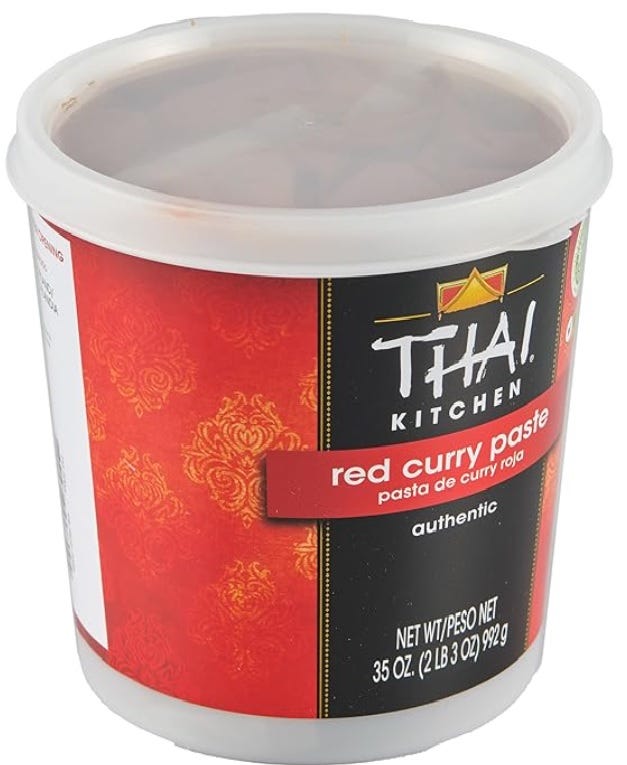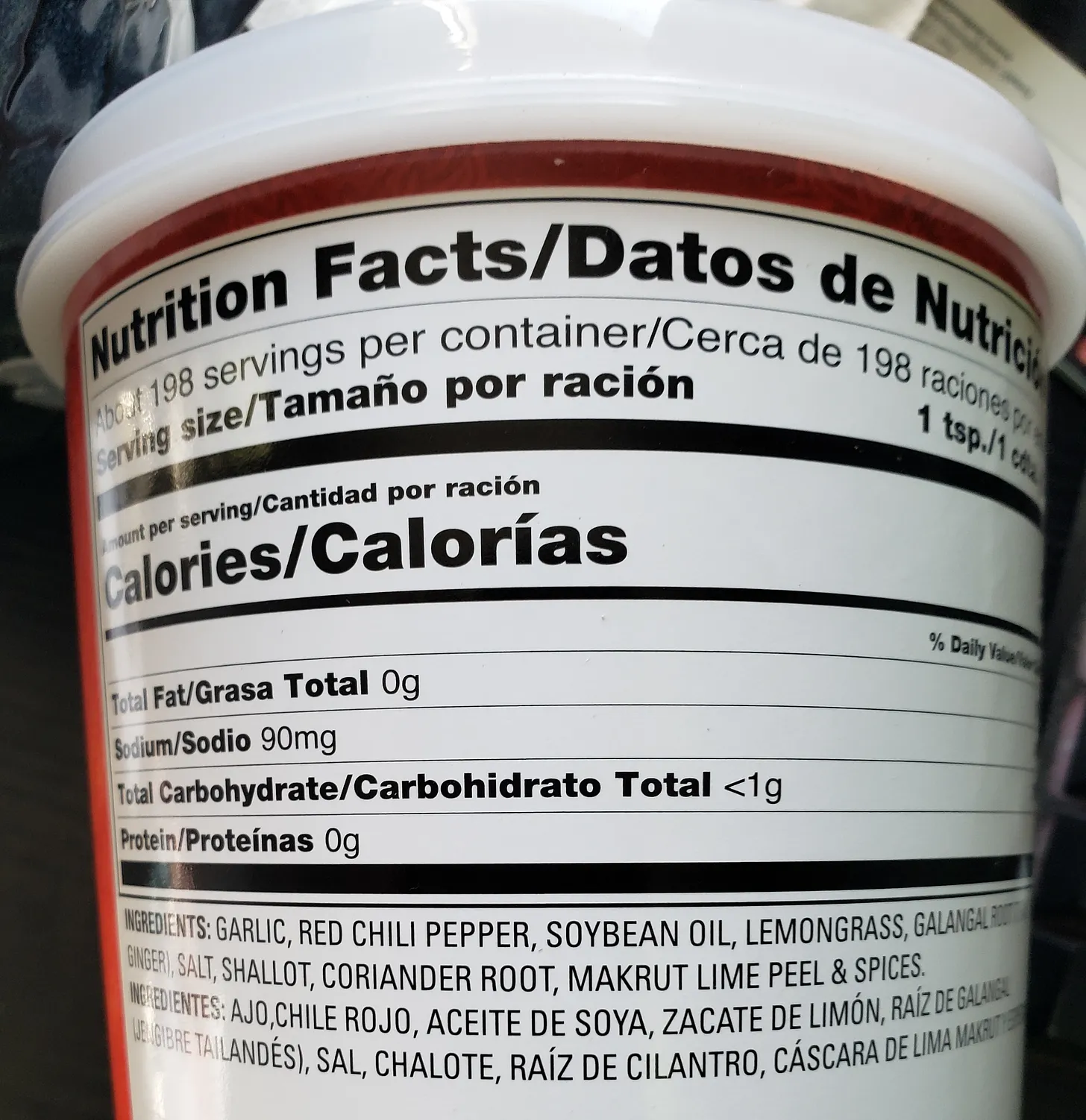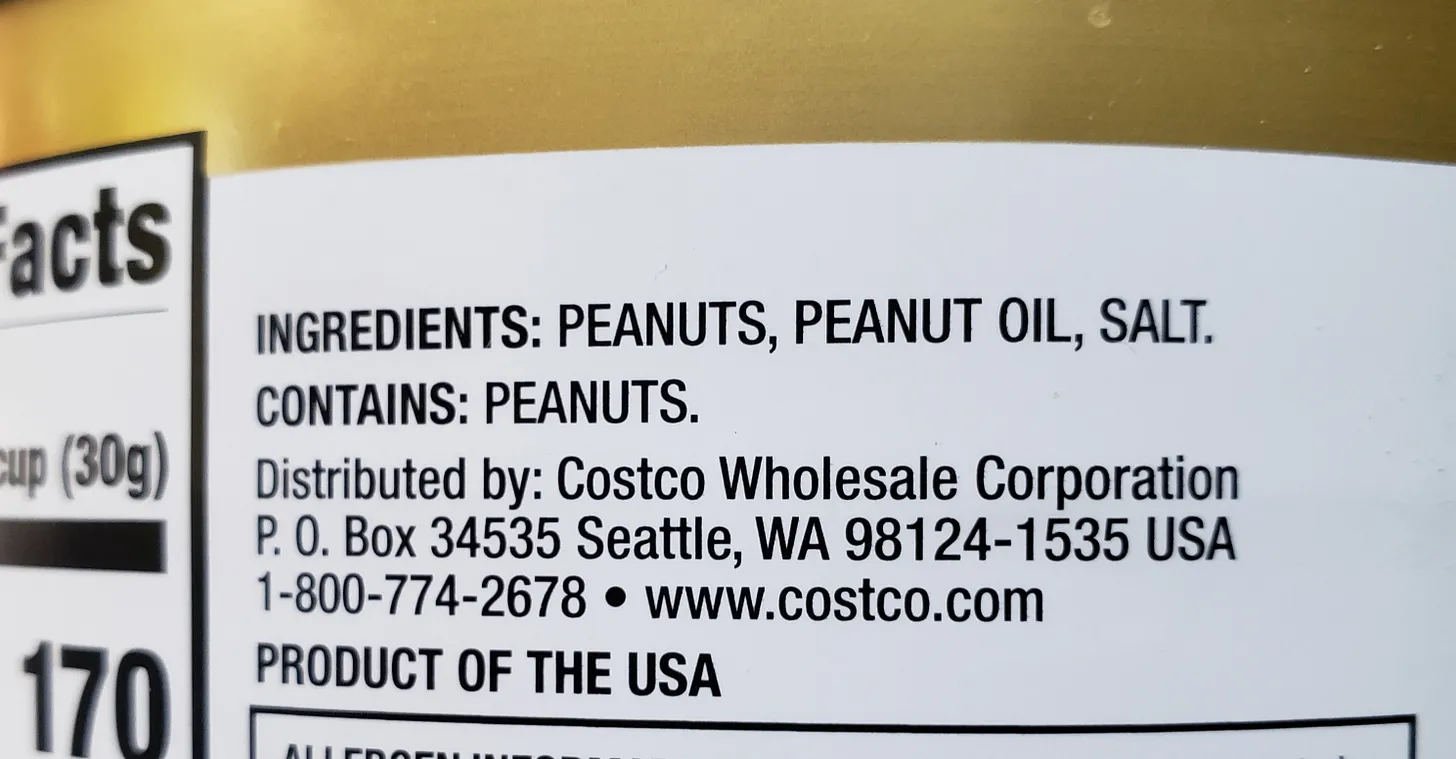April 27, 2025 | Health Prepping: Seed Oils Are Poison

Seed oils are getting a lot of bad press, so I’ve been reading ingredient lists with them in mind. The results are heartbreaking. Things that seemed healthy have turned out, thanks to their reliance on seed oils, to fall into the “heavily processed, do not eat” category. A couple of examples:
This Thai curry paste was a staple that I tossed into everything from soups to stir-fries.

But the ingredients list prominently features soybean oil, one of the oils that now sound like poison.

And Costo’s roasted peanuts (a favorite snack) are, alas, roasted in peanut oil.

Here’s some background:
What are seed oils?
(Cleveland Clinic) – Seed oils first emerged in the late 1900s as an alternative to partially hydrogenated oils. They’re plant-based cooking oils made from — you guessed it — the seeds of various plants.
These seeds are turned into oils that have become extremely common in both cooking and baking.
- Home cooking. You might put a few tablespoons of canola oil in a healthy muffin recipe or use it to pan-fry potato pancakes.
- Fried foods. These oils are also frequently used in restaurants and fast-food spots, where canola oil is the oil of choice for deep-frying.
- Processed and ultra-processed foods. Seed oils can be found in all kinds of packaged foods, including some frozen foods and even chocolate. They’re also sometimes added to foods marketed as “healthy,” including whole-grain crackers and breads, protein shakes, dressings and sauces.
But seeds themselves can be a really healthy addition to your diet. So, shouldn’t the same be true of oil made from seeds? Not quite.
“Seed oils are made through a chemical process where they’re bleached, refined and heated in order to be usable,” Zumpano explains. That process strips the seeds of their nutrients.”
Potential health risks of seed oils
“Seed oils have high levels of omega-6 fats, which can lead to inflammation,” Zumpano says, “and they’re mostly used to make processed and ultra-processed foods, which causes inflammation in the body.”
To better understand what all of that means for your health, Zumpano breaks down the issues with seed oils and how they’re used.
They’re chemically processed
Some seed oils would be high in vitamin E and phenols, if not for the refining process itself. But they’re typically very processed to help with taste, color and shelf life.
“Seed oils are chemically processed, which may include cleaning, pressing, bleaching, deodorizing, refining and, in some cases, adding a chemical solvent hexane for oil extraction,” Zumpano explains. “The processing of these oils strips the seeds of their nutrients and could potentially add harmful ingredients.”
The end result is oils with no real health benefits — though, this downside isn’t unique to seed oil. Other types of oil can be very processed and refined, too, so it’s always important to pay attention to what you’re buying.
They’re often used in unhealthy foods
“Most seed oils are utilized in the form of packaged foods, fast foods and eating out,” Zumpano says, “and that’s where most of the danger lies.”
You’re most likely to consume seed oils when you’re eating something that’s already pretty bad for your health — something that’s also full of fat, sugar and sodium.
A review of 45 studies on ultra-processed foods found that greater exposure to these types of foods is associated with a higher risk of negative outcomes, especially cardiometabolic disorders and mental health concerns. (We’ll talk about those shortly.)
They contribute to inflammation
Seed oils are high in linoleic acid, a type of omega-6 fatty acids, which are themselves a type of polyunsaturated fatty acid. Your body needs small amounts of these polyunsaturated fats, which are good for your cholesterol and help protect you from heart disease.
But “a small amount” is the key phrase here. A diet that’s too high in omega-6s is also a diet that’s typically too low in omega-3 fatty acids. The ideal omega-6 to omega-3 ratio is 2:1 or 1:1, but for most people in the U.S., the ratio is actually a whopping 10:1 or even 20:1.
This type of imbalance is thought to lead to inflammation in the body. While a little bit of inflammation is a good thing (it’s your body’s way of healing cell damage), chronic inflammation is definitely not. It’s linked to conditions like:
Again, this doesn’t mean seed oils cause chronic conditions, per se. But a diet high in seed oils can play a role in skewing your body’s delicate balance of omega-6s and omega-3s. This can then contribute to inflammation, which can lead to chronic conditions. So, it’s important to try to keep your diet in balance, on the whole.
Seed oils list: Which oils are we talking about?
Here are the eight seed oils most commonly used and discussed:
- Canola oil (aka rapeseed oil)
- Corn oil
- Cottonseed
- Grapeseed oil
- Soybean oil
- Sunflower oil
- Safflower oil
- Rice bran oil
- Peanut oil
You might hear this group of seed oils referred to as the “hateful eight,” a reference to some people’s belief that they’re toxic and should be completely removed from your diet.
And of course, they cause cancer:
Common Cooking Oils Linked to Breast Cancer Growth: Study
(Epoch Times) – Scientists have discovered a mechanism connecting omega-6 fatty acids to aggressive breast cancer progression.
A type of fat found in commonly used seed oils has been linked to faster growth of one of the most aggressive and difficult-to-treat forms of breast cancer.
A recent study found that high linoleic acid consumption activated a critical growth pathway in cancer cells.
Given that the study was conducted with mice, its findings may not be translatable to humans.
The authors of the study, published in Science, said their findings may provide new insights into personalized nutrition approaches for cancer prevention.
Linoleic Acid Linked to Tumor Growth
Linoleic acid is an essential fat needed in our diet, but its effect on the body is still a matter of contention.
In the study, researchers fed mice a diet rich in linoleic acid. They discovered that it triggered a process that sped up the growth of breast cancer. The diet high in linoleic acid resulted in elevated levels of FABP5, a protein closely linked to triple-negative breast cancer, an aggressive subtype of breast cancer.
The authors also observed higher levels of both FABP5 and linoleic acid in tumors and blood samples from patients recently diagnosed with triple-negative breast cancer.
“This discovery helps clarify the relationship between dietary fats and cancer, and sheds light on how to define which patients might benefit the most from specific nutritional recommendations in a personalized manner,” John Blenis, cancer researcher at Weill Cornell Medicine and senior study author, said in a statement.
While the overall incidence of breast cancer is declining, triple-negative breast cancer is becoming more prevalent, particularly in younger women and black women. It accounts for about 10 percent to 15 percent of all breast cancer cases.
The Omega Imbalance
Currently, the typical U.S. diet contains significantly more omega-6 fatty acids than omega-3 fatty acids, with estimates suggesting 14 to 25 times more omega-6 than omega-3. This imbalance is concerning, because while omega-3 is known for its anti-inflammatory properties, omega-6 can potentially promote inflammation when consumed in excess.
Chronic inflammation is one of the leading drivers of various types of cancer and other chronic diseases, Emily Feivor, registered dietitian nutritionist at Long Island Jewish Forest Hills hospital in New York City, told The Epoch Times.
The most important step to lowering omega-6 intake is to avoid processed seed and vegetable oils, along with the foods that contain them, Feivor said.
Now back to the Cleveland Clinic article for a solution:
Alternatives to seed oils
Instead of using seed oils at home, Zumpano suggests doing most of your home cooking with oils that are high in heart-healthy omega-3 fatty acids instead of piling on the omega-6s:
- Extra-virgin olive oil (EVOO) for low-heat cooking
- Avocado oil for high-heat cooking
“Both of these oils are clinically shown to have higher monounsaturated fats,” Zumpano shares. “They’re not seed-based, and they don’t go through the same type of processing, so they’re very unrefined and even have a lot of nutritional benefits.”
But what about using seed oils at home? Should you throw away that bottle of sunflower oil on your shelf? Experts have varied opinions, but Zumpano believes they should be limited in home cooking.
“They’re not necessarily the greatest choice in oil,” she states. “But when used in moderation in home cooking, they’re not nearly as bad for you as when you’re getting them in ultra-processed foods, fast foods and fried foods.”
STAY INFORMED! Receive our Weekly Recap of thought provoking articles, podcasts, and radio delivered to your inbox for FREE! Sign up here for the HoweStreet.com Weekly Recap.
John Rubino April 27th, 2025
Posted In: John Rubino Substack
Next:











